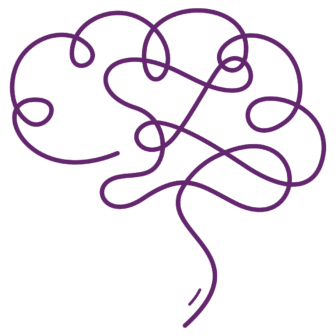Organizations often lack a disciplined way to leverage the learnings and experience that their staff have acquired throughout their tenure and past experiences, and they only pay attention to this issue once it becomes too big to ignore. Examples of this situation include:
- A significant cohort of long-tenured employees reaching retirement age.
- High turnover and the constant re-learning that occurs with each new generation of employees prevents the organization from being able to grow and scale the way they want to.
- A key team member is either absent or unavailable, and a critical initiative subsequently fails.
Enterprise Knowledge is often brought in at this stage. However, it is important for knowledge managers to help their organizations be more proactive about capturing and disseminating tacit knowledge before it’s too late. This is your institutional knowledge—the knowledge that your staff have of your operations, processes, products, and services. Knowledge that if someone left, and it was not documented, could interrupt operational effectiveness. Before continuing the conversation, it is helpful to revisit the definition for tacit knowledge from the first part of this blog series:
Tacit knowledge is highly internalized knowledge that is difficult to articulate, record, and disseminate. It can only be acquired through experience in a relevant context.

Why is Capturing Tacit Knowledge Challenging?
If we think about tacit knowledge, its very nature makes it difficult to capture:
- It resides in people’s heads.
- Experts must volunteer the knowledge they hold.
- Even if experts are willing to share their knowledge, an expert may not be able (and it may not be practical) to elicit every single detail and context of what they know.
- People’s memories are not perfect, and if someone is trying to convey something about an activity or event that happened even mere weeks ago, they may not fully remember it.
A Holistic Approach to Capturing and Transferring Tacit Knowledge
At EK, we leverage our People-Process-Content-Culture-Technology framework to approach challenges from a holistic perspective. Below, I share best practices for capturing and transferring tacit knowledge based on this framework.
People
Because tacit knowledge resides in people’s heads, this factor of our framework is critical to consider. To capture their knowledge, you have to make sure that you first have the right experts and that you are asking questions that will elicit the outcomes you seek. Especially when seeking knowledge related to complex activities, it is important to obtain multiple perspectives in order to get a more complete view of the desired knowledge. For example, you are facilitating a retrospective on a large international conference; to get a better understanding of what went well and what can be improved, you would need to include more than just participants. You may want to talk to representatives from the event sponsors, speakers and panelists, supporting staff and volunteers, suppliers, and so on.
Process
From a Process perspective, we have to make sure that we are capturing knowledge at the right time. We have written before about high value moments of knowledge capture. These are generally inflection points along organizational activities, like the end of a project, the realization of a milestone, a colleague’s departure, the close of a fiscal year, and so on. It is important to strike a balance between capturing knowledge while it is still fresh, while also giving people enough time to ‘digest’ or process what they may have experienced so that they can form additional insights.
Content
Content is the result of capturing and codifying an organization’s knowledge. It is important that content is structured in such a way that prompts employees to capture the relevant and important ‘knowledge nuggets’ that we seek. For instance, if we are looking for lessons learned after a project, we shouldn’t just offer employees a form with a single field that prompts them for singular successes and failures with the project. Instead, structure the lessons into meaningful metadata that can be later sorted and found. For instance, the type of project, relevant partners, unexpected events, resources that the team lacked, or the elements that contributed to making the project a success.
Culture
As I mentioned above, people have to volunteer their tacit knowledge. It is easy for them to do so in an environment that promotes knowledge sharing and establishes a psychological safe space where they can discuss difficult topics without judgment or repercussions. Unfortunately, this is not the case in all organizations. In this blog, our founder Zach Wahl offers advice on how to create a knowledge-sharing culture, which includes the use of meaningful rewards and recognition, coaching leaders into exemplifying knowledge-sharing behaviors, and creating both spaces and opportunities for people to exchange ideas.
Technology
As usual, we leave technology last because technology is an enabler and not a centerpiece. This factor is closely related to content because ideally, you would store the resulting content in a repository where knowledge can be preserved and managed so it can benefit the rest of the organization. Beyond having a repository to store the knowledge, organizations should also consider a search tool that allows employees to retrieve this knowledge in an easy and intuitive way.
Closing
Capturing tacit knowledge so it can be leveraged across the organization can be a challenging task. However, with a disciplined, systematic, and holistic approach, it can be accomplished. If you need guidance on creating value by managing your tacit knowledge, please contact us.
